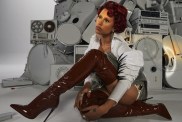http://www.gettyimages.com.au/detail/news-photo/katy-perry-performs-onstage-during-the-prismatic-world-tour-news-photo/451945688
Making a living as a touring act sounds like a pretty sweet deal. In fact, the general consensus is that it’s the only way to make a dependable buck as a musician these days. But just how much of a shows revenue ends up in the headliner’s pocket? And why do the opening acts often ultimately lose money by getting involved?
As…












